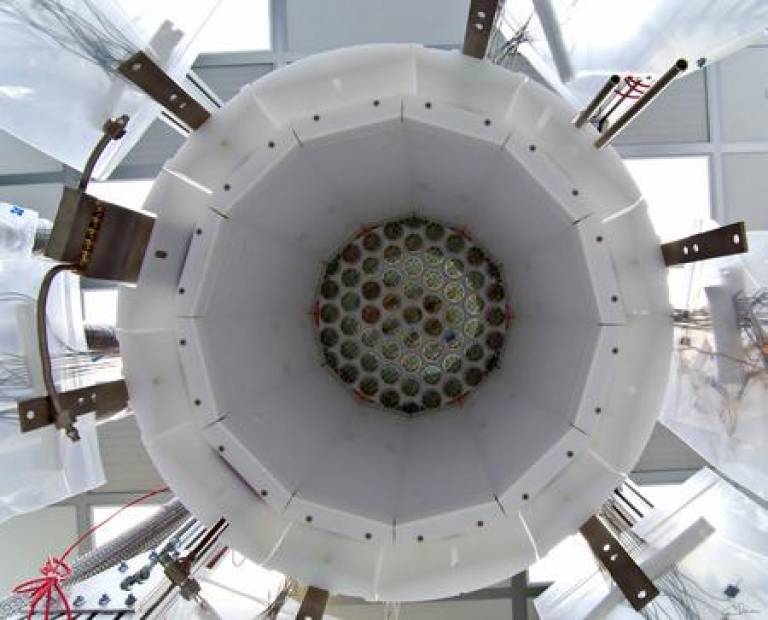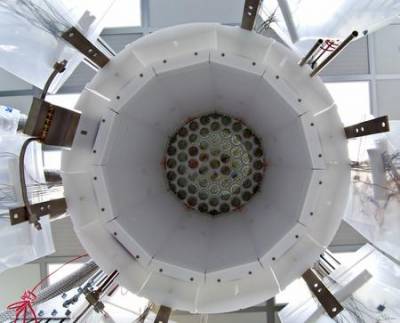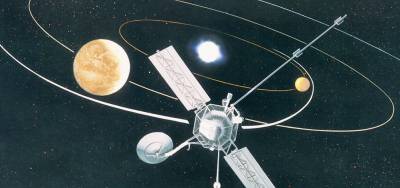Detecting dark matter
14 April 2014

The kind of matter and energy we can see and touch - whether it is in the form of atoms and molecules, or heat and light, only forms a tiny proportion of the content of the Universe, only about 5%. Over a quarter is dark matter, which is totally invisible but whose gravitational attraction can be detected; while over two thirds is dark energy, a force that pushes the Universe to expand ever faster.
Scientists have little solid proof of what either of them might be, despite them making up the lion's share of the Universe: we literally don't know what the vast majority of everything is.
The (Large Underground Xenon) experiment, which includes members of UCL's High Energy Physics group in its team, is trying to shed some light on dark matter, and hence reveal some of what this missing 95% of the Universe is all about.
One of the stronger candidates for what kind of particle makes up dark matter is the so-called 'weakly interacting massive particle'. Because they barely interact with normal matter, particles of dark matter should be able to flow through the Earth almost totally uninhibited. But very occasionally one of them should hit the nucleus of a xenon atom in the LUX experiment, triggering a tiny flash of radiation inside the extraordinarily sensitive detector, pictured above. LUX is located a mile underground in South Dakota, USA. The depth should be no barrier to dark matter particles, but the rock prevents other kinds of particles from interfering with the experiment.
LUX began operation last year, and is searching for the first direct detection of a dark matter particle. Preliminary results from the LUX experiment have not detected any sign of these particles, meaning that the mystery - for now - is as deep as ever.
Photo credit: C. H. Faham (Brown University)
Links
High resolution image
This image can be reproduced freely for non-commercial purposes, providing the source is credited and the photo is not altered
 Close
Close





